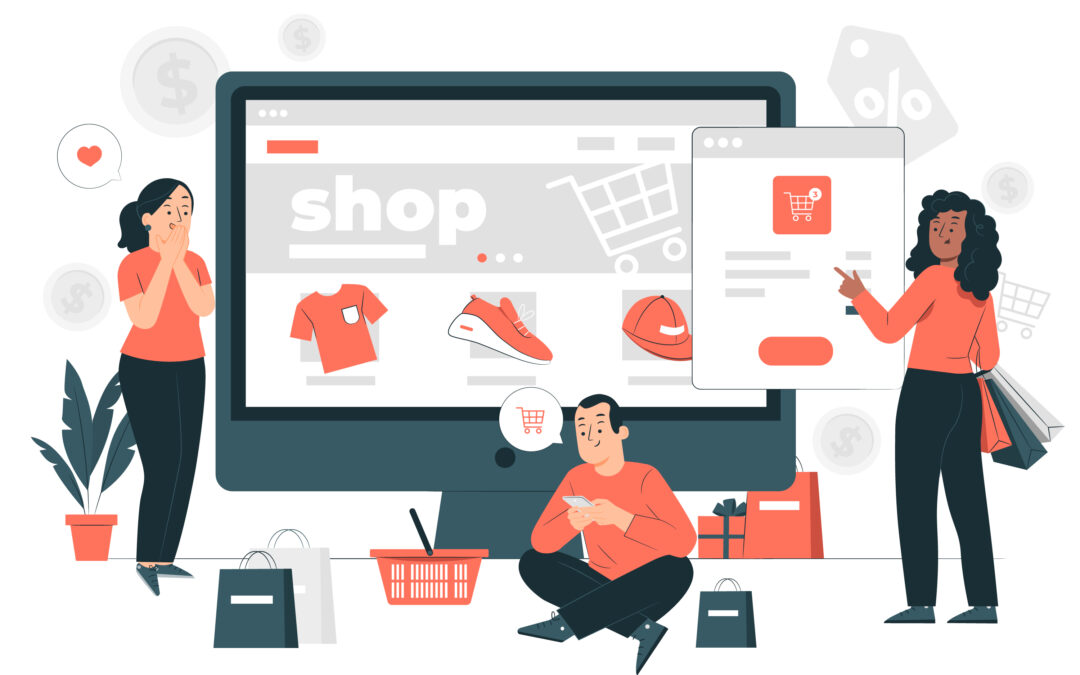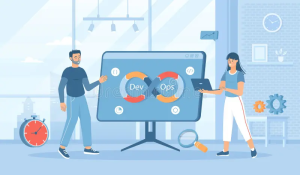Discover the top trends shaping E-Commerce Development in 2025. Learn how USA & UK businesses can build scalable, AI-driven, customer-first online stores.

-
Introduction – Why E-Commerce Development is Critical in 2025
-
Key Trends Shaping E-Commerce Development in USA & UK
-
What Businesses Should Focus On
-
Choosing the Right E-Commerce Development Partner
-
Measuring Success – Key Metrics
-
Future Outlook Beyond 2025
-
Conclusion
E-Commerce Development in 2025 has become a business-critical priority for companies in the USA and UK
E-Commerce Development in 2025: What USA & UK Businesses Must Prioritise to Win Online
Introduction – Why E-Commerce Development is Critical for USA & UK Businesses in 2025
In today’s fast-moving digital economy, e-commerce isn’t just a channel—it’s your business lifeline. For companies operating in the USA and UK in 2025, strong e-commerce development means the difference between growth and stagnation. The data backs it up: global e-commerce sales are projected to reach nearly $6.8 trillion in 2025. In the UK specifically, just under a third of all retail spending is expected to happen online in 2025.
But more than scale, what matters now is quality of experience, speed of innovation, and agility. With customer expectations soaring—whether in New York or Newcastle—a robust e-commerce development strategy is no longer a “nice-to-have”; it’s core business.
In this article, we’ll walk you through the main trends shaping e-commerce development, what your business (in USA or UK) must focus on, how to choose a partner or build your strategy, how to measure real success, and what’s coming next beyond 2025.
Key Trends Shaping E-Commerce Development in the USA & UK
Personalisation, AI & predictive commerce
One of the biggest accelerators in e-commerce development for 2025 is personalisation. Brands are using AI and machine learning to tailor every step—from discovery to checkout—to individual users. According to recent reports, shoppers are increasingly expecting brands to “get” them, yet many say they still don’t.
In both the USA and UK markets, implementing predictive product recommendations, dynamic pricing, churn-prevention models and AI-powered chatbots can strongly differentiate. Given the volumes in 2025, personalisation isn’t optional.
For example: one report states that 42% of UK and 41% of US shoppers will use augmented reality (AR) in their online shopping by 2025
Thus, your e-commerce development must embed predictive analytics, AI workflows and UX built for individual journeys.
Headless & omnichannel architectures
Traditional monolithic e-commerce platforms are under pressure. The rise of headless commerce—where the front-end is decoupled from the back-end—allows businesses to deliver seamless experiences across websites, mobile apps, social shops, kiosks and IoT devices.
For USA & UK businesses, omnichannel is no longer just presence—it’s integration. According to Salsify, in the back half of 2025, omnichannel opportunities will be a major driver.
Therefore in your dev strategy, invest in architecture that supports multiple touchpoints, rapid updates and consistent data across channels.
Mobile-first, social commerce & live shopping
Mobile commerce is surging: by 2025, mobile shopping is predicted to drive huge volumes of online transactions. Meanwhile, social commerce (shopping via social platforms) and livestream shopping are growing in the USA and UK
Development teams must deliver mobile-first experiences, integrate with social shopping APIs, enable seamless checkout in app/social environments and gear for live interactions. If you’re building or revamping, mobile + social must be core.
Payments, security, data privacy & compliance
In the USA/UK e-commerce space, customer trust and regulatory compliance are essential. Payment methods, checkout security, data protection, privacy laws (e.g., UK’s recent digital markets/regulation reforms) all feed into development decisions. For instance, one piece of UK legislation—the Digital Markets, Competition and Consumers Act 2024—changes how digital commerce entities operate.
Additionally, seamless digital wallet usage, frictionless checkout, fraud prevention and encryption are development priorities. With shoppers more aware of privacy and security, your e-commerce platform must include these by design.
Sustainability, supply-chain agility & delivery innovation
E-commerce development isn’t just software—it’s about supporting broader expectations around sustainability, logistics and fulfilment. UK firms in particular are being pressured to deliver eco-friendly, flexible delivery options
Expect innovations like dynamic routing, out-of-home (PUDO) pickup points, greener packaging and reverse logistics to become part of the development roadmap. For USA & UK businesses, platform integrations with fulfilment systems and logistics APIs will become standard.
What Businesses Should Focus On When Building or Revamping Their E-Commerce Platform
Defining business goals, target markets (USA vs UK) & tech strategy
Start with clarity. What are you trying to achieve with your e-commerce site? Is it international growth (USA & UK), higher AOV, broader product range, stronger repeat business?
For USA vs UK, consider nuances: payment methods (USD vs GBP), shipping logistics, cultural tone, pricing strategy. UK consumers may have different expectations around same-day delivery or returns.
Your tech strategy must align: front-end vs back-end stack, integrations, scalability, headless vs monolith. Without clear alignment, you risk re-work or mis-investment.
Choosing the right tech stack: platform, headless vs monolith, integrations
Development today means choosing wisely. Headless commerce offers agility but demands more engineering. A monolithic platform may be faster to launch but harder to scale.
Also evaluate integrations: ERP, CRM, payment gateways, shipping APIs, analytics, AI/ML services, live-chat/support tools. For instance, you’ll need analytics to support personalised journeys; you’ll need logistics integrations for multi-region shipping.
Ensure your stack supports: multi-currency, multi-region, mobile-first, social-commerce, fast performance. Choose a partner or platform with proven experience in USA/UK.
UX/UI, performance optimisation & mobile experience best practices
User experience is key. Poor UX kills conversion. A recent report found that smooth frictionless experience is the top expectation for shoppers
For USA/UK audiences:
- Optimize site speed (especially mobile)
- Ensure responsive design and mobile-first layout
- Low-friction checkout, saved payments, guest flows
- Accessible design (for UK/EU especially)
- Trust signals, localised UX (currency, shipping, language dialects)
- Micro-interactions, motion design, social proof
Performance optimization (CDN, caching, Core Web Vitals) is critical—especially when targeting multiple regions.
Data, analytics, personalisation and SEO for e-commerce
An e-commerce site without analytics is flying blind. Include:
- First-party data capture, customer segmentation
- Personalisation engines: product recommendations, dynamic content
- SEO: product page optimisation, schema markup, mobile indexing, high performance
- Voice search readiness (with AI/assistants)
- Analytics dashboards tracking acquisition → activation → retention
In the USA & UK markets, SEO remains the dominant discovery channel (63% of shoppers start with search).
Incorporate analytics from day one so you can iterate and optimise based on behaviour, not assumptions.
Post-launch, maintenance, scalability & growth roadmap
Launching the platform is just the beginning. Post-launch operations what carry you through. Plan for:
- Regular feature updates (personalisation, social commerce, live events)
- Performance monitoring, security patches
- Scalability planning (traffic surges in US/UK markets)
- Growth into new regions or channels
- Budget and resource for optimisation, A/B testing
E-commerce development is not a one-off project—it’s continuous evolution.
How to Choose the Right E-Commerce Development Partner or Strategy

Evaluating technical expertise & past work in USA/UK markets
When selecting a development partner, ask for: portfolios of e-commerce sites that served US and UK markets; metrics from those projects (speed, conversion uplift, mobile performance); testimonials from US/UK clients.
Make sure they understand modern stacks (headless, PWA, mobile commerce, omni-channel). Experience matters.
Understanding regional nuances: localization, payment methods, logistics
For the USA & UK, differences matter. Localisation isn’t just language—it includes measurement units, formats, cultural cues, shipping expectations, tax/return policies.
Check if the partner has delivered multi-region stores or localised variants. Payment gateways, shipping carriers, customer service expectations all differ by region.
Ensuring robust security, data protection & regulatory compliance
Your partner must bake security, privacy and compliance into development—not treat them as add-ons.
Consider: encryption, PCI-compliance, GDPR/UK data protection, US state privacy laws, return/refund policies, accessibility standards.
A partner aware of these and proactively designs accordingly ensures fewer surprises later.
Communication, support model & scalability for future growth
Development isn’t just build—it’s ongoing. Check how the partner handles:
- Project management and communication (time zones, status updates)
- Post-launch support, updates, bug-fixes
- Scalability: can they grow with you? What happens when traffic doubles?
- Hand-over: will you own code, documentation, data?
Choose a partner who acts like a growth collaborator, not just a vendor.
Cost-structure vs value-for-money: what to look for
While cost matters, value matters more. Evaluate:
- What is included (UX, performance, mobile optimisation, analytics setup)
- Ongoing maintenance costs
- Flexibility for scale and change
- Hidden costs (licensing, integrations, updates)
Often choosing the lowest cost leads to trade-offs—better to invest in a foundation that supports future growth.
Measuring Success – Key Metrics & KPIs for E-Commerce Development
Acquisition, conversion and retention metrics
Key early metrics:
- How many visitors (acquisition)
- Of those, how many convert (conversion rate)
- How many return (repeat purchase or retention rate)
This gives you an early read on platform effectiveness.
Engagement, average order value (AOV), cart abandonment & repeat purchases
- Average Order Value (AOV): Are customers buying more?
- Cart abandonment rate: High rate means friction in checkout, UX failures
- Repeat purchase rate: Signals loyalty and platform stickiness
Tracking these helps you identify bottlenecks and growth levers.
Technical performance: site speed, uptime, Core Web Vitals
Technical metrics often underpin conversion rates. Key metrics include:
- Largest Contentful Paint (LCP), First Input Delay (FID), Cumulative Layout Shift (CLS)
- Load time and time-to-interactive
- Uptime and server response time
Poor performance equals lost revenue.
Customer satisfaction, security incidents, compliance scores
Don’t ignore qualitative and risk metrics:
- Customer satisfaction (CSAT), Net Promoter Score (NPS)
- Number of security incidents or breaches
- Compliance audit results (accessibility, privacy regulations)
Brands in USA/UK must maintain trust—one breach or poor experience can erode brand quickly.
Future Outlook – What’s Next in E-Commerce Development Beyond 2025

Conversational commerce, generative AI & voice-enabled shopping
Looking ahead, conversational commerce—shopping via voice assistants or chatbots—will accelerate. Brands must plan for natural-language search, voice-enabled checkout, AI-powered storefronts.
For the USA & UK, this means preparing for a new shopping interface paradigm.
Global expansion, new marketplaces & localization beyond USA/UK
Your platform built for the USA/UK should later scale globally. That means: multi-currency, multi-language, localisation of UX, international logistics, adaptive architecture.
Markets beyond the USA/UK will increasingly contribute to growth—planning early pays off.
Ecommerce innovation in logistics: drone delivery, PUDO points & sustainability
Logistics will convert into competitive advantage. Out-of-home delivery, sustainable shipping, on-demand fulfilment—all integrated via dev platforms. In the UK for example, PUDO and alternative delivery models are rising.
Your e-commerce development roadmap should include logistics integrations, real-time tracking, sustainability features.
Ethical commerce, inclusive design & environmental responsibility
Consumers—especially in the UK—expect brands to act responsibly. Inclusive design (accessibility), eco-friendly practices, and transparent supply chains will differentiate
Development must embed these principles—not treat them as extras.
Conclusion
E-commerce development in 2025 for USA & UK businesses is about much more than “build a shop and go live.” It’s about building a resilient, high-performance, personalised and scalable platform that aligns with business strategy, serves customers, and adapts over time.
To recap:
- Understand the trends (AI, headless, mobile/social commerce, logistics)
- Align your platform build with clear goals, tech strategy and regional nuances
- Choose your partner or internal team wisely—look for experience, support and value
- Measure accurately: acquisition to retention, performance metrics to satisfaction
Plan for beyond 2025: conversational commerce, global expansion, sustainability
If your business in the USA or UK is thinking of launching or revamping e-commerce—start now. Map your objectives, choose your tech stack, select your partner, monitor your metrics, and get ahead. The online market keeps moving—and so should you.


